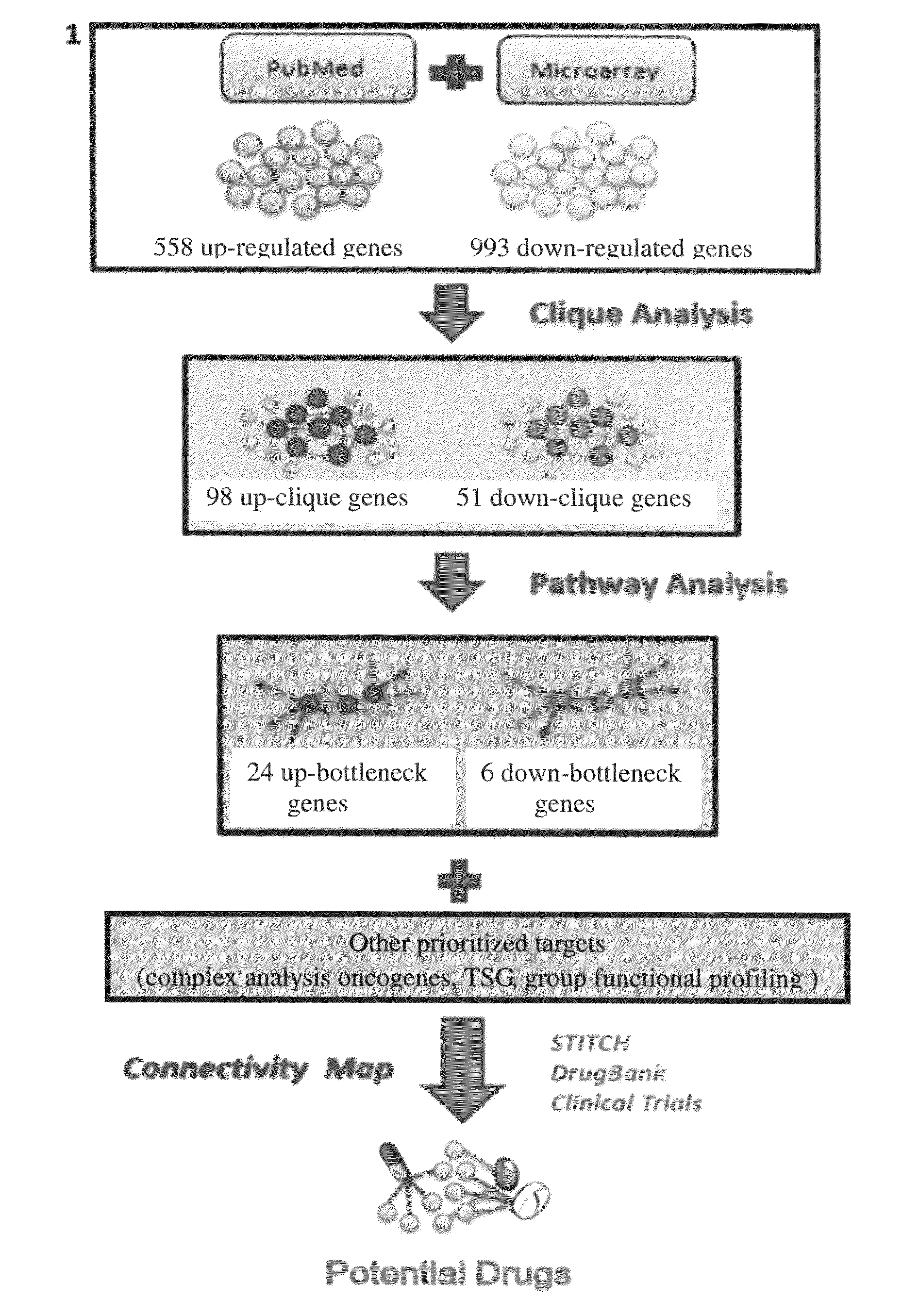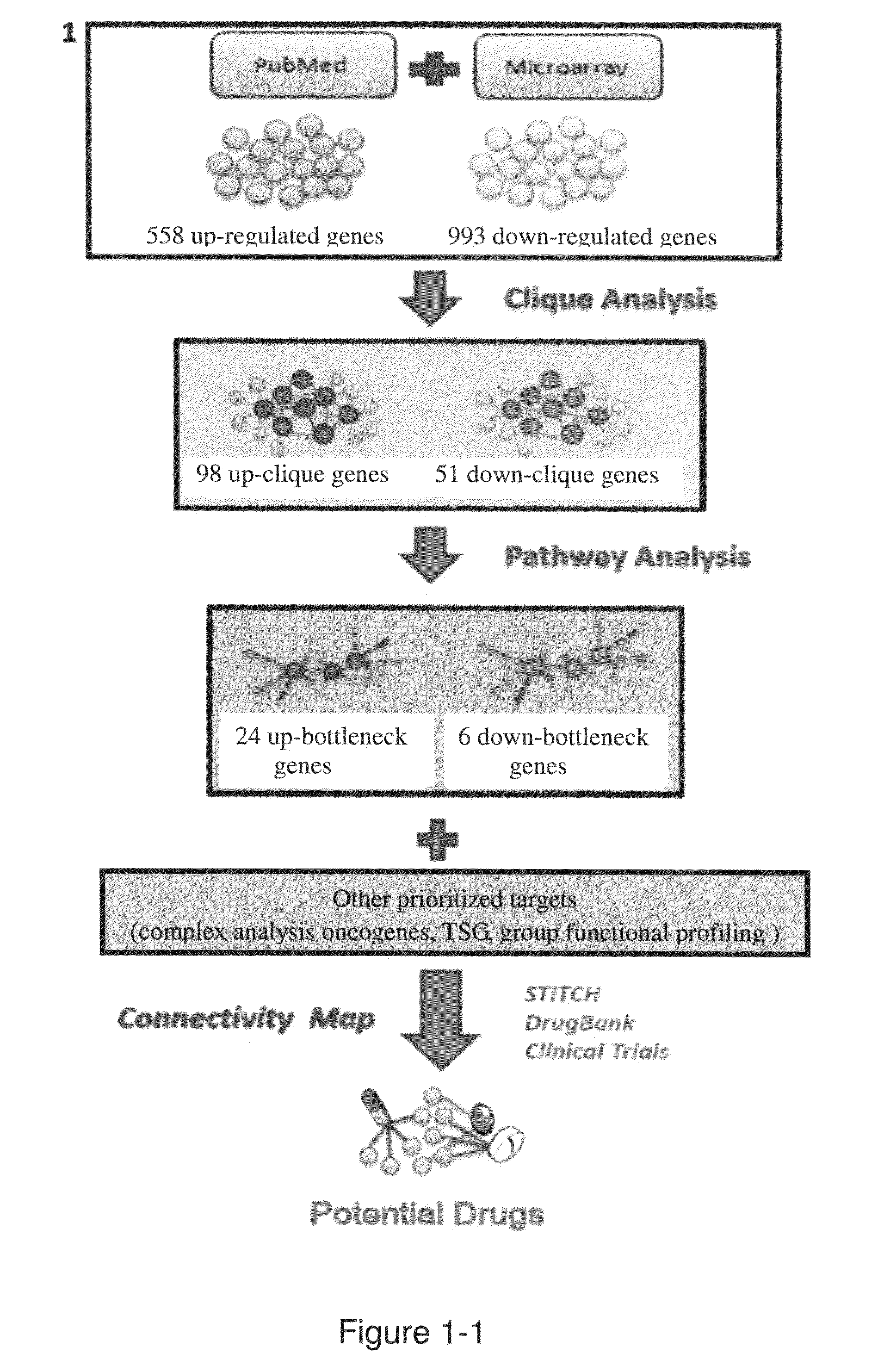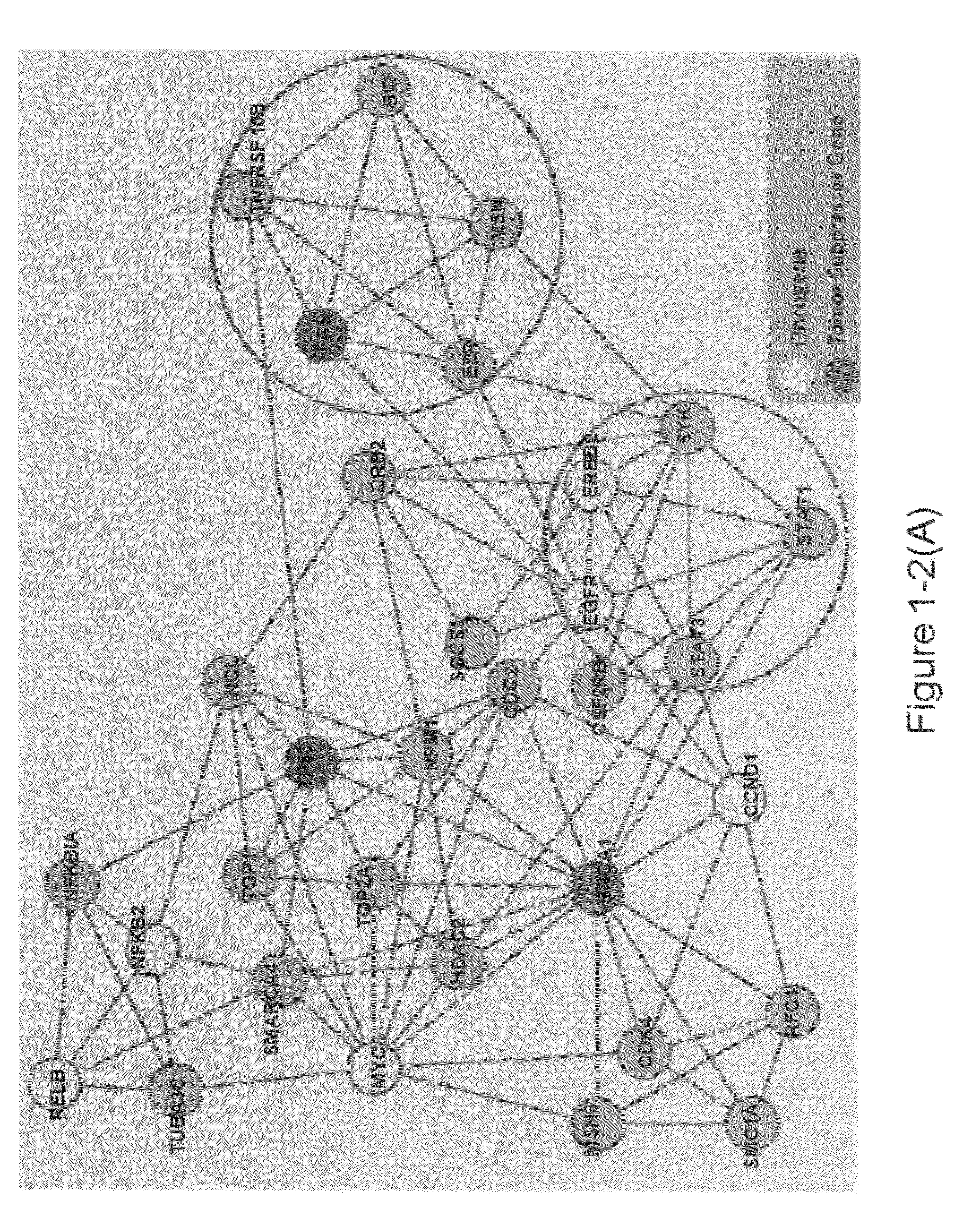Method for discovering potential drugs
a discovery method and drug technology, applied in the field of discovery process, can solve problems such as complex interface development, and achieve the effect of accelerating the discovery process, and reducing the development cos
- Summary
- Abstract
- Description
- Claims
- Application Information
AI Technical Summary
Benefits of technology
Problems solved by technology
Method used
Image
Examples
example 1
[0035]1. Computational Methods
[0036]1.1 Acquiring NPC-Related Gene Sets and Constructing NPC Protein-Protein Interaction (PPI) Network
[0037]Two major components constituted the NPC-related gene expression signature in this invention. One component included the collection of the microarray profiles from three studies (Supplementary table S2) (4, 5, 7). All microarray data were the result of non-treated NPC tissues compared to normal nasopharyngeal tissues.
[0038]The second part of the gene collections consisted of the text mining of NPC-related PubMed abstracts. There were 4939 abstracts extracted from PubMed containing the keyword “Nasopharyngeal carcinoma” but not having the keywords “SNP” or “polymorphism.” To further extract the genes mentioned in the abstracts, we first entered all these abstracts into AIIAGMT (Adaptive Internet Intelligent Agents laboratory's Gene Mention Tagger) (18). The Gene Name Service (19) was used to translate these gene names into corresponding gene iden...
example 2
[0085]Materials and Methods
[0086]Collection of HCC-Related Gene Expression Signatures
[0087]A fundamental part of EHCO2 is the collection of 14 HCC-related gene sets from PubMed as well as diverse high-throughput studies and computational predictions and validations (FIG. 2-1A). The details of each set are listed in the supplementary material.
[0088]Validation of EHCO2 genes by Q-RT-PCR
[0089]The mRNA expression levels were determined by quantitative RT-PCR in 21 pairs of HCC patients (from Taiwan Liver Cancer Network, see Acknowledgement). The results were normalized to the mRNA expression level of GAPDH in each sample (FIG. 2-1B).
[0090]Generation of HCC Test Sets
[0091]Three groups of datasets were used in this study; the details are summarized in Table 2-1.
TABLE 2-1HCC sets criteria and individual gene count.Number of up / downGroupNameregulated genesSample SizeFeaturesSelection Criteria1SMD 90 / 180102 primary HCC and 74Intersectedadjacent normalwith STITCH38GIS160 / 38 37 HBVHBVLEE_NIH16...
example 3
[0122]Collection of HCC-related Gene Expression Signatures
[0123]As shown in FIGS. 3-1, 3-2 and 3-3, we maintained and updated the eight original datasets in the first version of EHCO. Some of the gene symbols and identifiers were corrected using the Gene Name Service. Some of the genes were excluded because they were discontinued from NCBI. PubMed, TableX_mRNA, and TableX_protein datasets were also updated with new genes. Briefly, for the PubMed dataset, we have extracted 1,084 genes (with gene names approved by HUGO Gene Nomenclature Committee) from approximately 4,500 abstracts in the PubMed category. Moreover, seven additional reports were manually added into the TableX_mRNA dataset. Similarly, four extra proteomics reports were included in the TableX_protein dataset. Among the HCC-related studies, EHCO2 further included six additional gene sets:
[0124]UCSF used cDNA microarrays containing 17,000 unique human genes to analyze the gene expression profiles of 102 primary HCC and 74 ...
PUM
 Login to View More
Login to View More Abstract
Description
Claims
Application Information
 Login to View More
Login to View More - Generate Ideas
- Intellectual Property
- Life Sciences
- Materials
- Tech Scout
- Unparalleled Data Quality
- Higher Quality Content
- 60% Fewer Hallucinations
Browse by: Latest US Patents, China's latest patents, Technical Efficacy Thesaurus, Application Domain, Technology Topic, Popular Technical Reports.
© 2025 PatSnap. All rights reserved.Legal|Privacy policy|Modern Slavery Act Transparency Statement|Sitemap|About US| Contact US: help@patsnap.com



